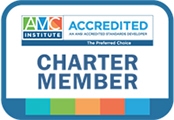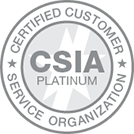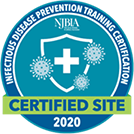I’ve been reading association publications for more than 30 years and I’ve noticed that articles about association management company (AMC) transitions often seem to have a negative spin. In June 2013, I had the opportunity to play an active role in the transition of the American Neurological Association from L&L Management Services Inc. to Association Headquarters Inc. After meeting with L&L Management President Linda Scher, MBA and Vice President Tisha Kehn, I committed to sharing with the association and AMC community how a successful transition might unfold.
Whether inbound or outbound, there are some critical components in a transition process.Section 3.5 of the ANSI Standard of Good Practices for the Association Management Company Industry clearly defines the need for Accredited AMCs to establish transition procedures that, at a minimum, include:
- A timetable to include the closing or transferring of all accounts, shipment of client materials, and notification to members.
- A list of clearly defined responsibilities of current AMC volunteer leaders and new management.
- Established procedures, as well as fees and charges, for agreed-upon services that may be rendered following termination.
- A process and timeline for the shipment of materials in an organized manner, with clearly marked files.
- The methodology to be used for timely management change notification to all vendors.
- An outside audit by a certified public accountant of the financial records immediately after the transfer of financial responsibilities, or, if no audit is authorized, a release in writing from the client board of directors that it will accept the financial records as transferred.
Beyond these requirements, I recommend a few more critical components be considered for a successful transition:
Trust
It’s so much easier to start a transition process when an element of trust already exists between those involved. This is where involvement in ASAE’s AMC Section Council or AMC Institute can play an important role. As an active supporter and facilitator of the AMCI Accreditation program, I've personally had a chance to meet both Linda and Tisha at an accreditation workshop. This allowed us all to approach the process with a high degree of trust.
Realistic Expectations
During the transition process, it’s important to remember that we need to have realistic expectations regarding the availability of the staff of the other AMC. Having a conversation about a set time for transition meetings benefits both AMCs.
Accountability (on Both Sides)
AMC owners must set the tone for accountability of their staff. Accredited AMCs have committed to training staff on the elements of a successful transition. Commitments outlined in timelines need to be honored.
Nuances
AMCs that are proactive in sharing the nuances of the client being transitioned contribute greatly to a successful transition. We all know that written policies and procedures only go so far in explaining the unique nuances of an association’s culture and preferences.
Surprises: Count on Them!
Even in the best of transitions, you’ll find a few surprises. Surprises sometimes surface in the details of vendor contracts related to who owns designs or codes. Other surprises could involve program details that slipped the mind of the volunteer leader during your contract negotiation. These examples of issues that might surface need to be dealt with through the course of the transition process. They’re just a part of life!
Interest of the Client
The client’s best interest needs to be the focal point of the transition. When AMCs are able to keep their egos in check and focus on delivering the transition with the best interest of the client front and center, everyone wins.
Timeline
Starting with a realistic timeline makes a transition unfold in a smooth fashion. Ideal transitions include a 90-day timeline that allows both AMCs to prepare for what needs to be done. Accelerated timelines of 30 or 60 days challenge the transition process, but that doesn't necessarily mean the transition can’t be accomplished effectively.
Integrity
Transitions built on the integrity of the transition participants on both sides are destined for success. When situations surface (and they will) that you’re unprepared to deal with, knowing that the other AMC shares a core value of integrity will help to resolve the issue.
Open Communication
Don’t hide behind email. Yes, it’s important to document conversations and plans for tasks and responsibilities, but it’s also important to know you can pick up the phone and have an open and honest conversation about any blip in the documented plan.
Nimbleness
It’s important to embrace an element of nimbleness during the transition process. While AMCs are working through the transfer of data, files, and checklists, the show must go on for the association’s programs. A successful transition will be virtually transparent to the average member, and at the end of the day, isn’t that the goal?




